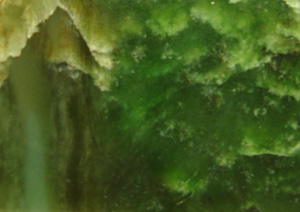Jade, with its rich history and vibrant hues, has long been revered for its beauty and cultural significance. However, not all that glitters green is jade. Several stones are often mistaken for this prized mineral, leading to confusion among collectors and enthusiasts. Let’s delve into some of these jade look-alikes and explore how to distinguish them from true jade.
The Allure of Jade
Before we explore the imposters, it’s essential to understand what makes jade so special. Jade comes in two primary varieties: nephrite and jadeite. Both types have been cherished for thousands of years, particularly in Chinese, Maori, and Mesoamerican cultures. Jadeite is rarer and typically more valuable, with colors ranging from deep greens to lavender and even white. Nephrite, while more abundant, still boasts a captivating array of greens and creamy whites.
Common Stones Mistaken for Jade

Serpentine
- Appearance: Serpentine can closely resemble jade, especially in its greenish shades. It often has a waxy luster and can be translucent to opaque.
- Differences: Serpentine is generally softer than jade, with a Mohs hardness of 3-6 compared to jade’s 6-7. It can be scratched more easily, which is a quick test to distinguish it from jade.
Aventurine
- Appearance: This quartz variety often has a sparkling effect due to inclusions of mica or other minerals, giving it a glittery appearance not found in jade.
- Differences: Aventurine is usually more sparkly and lighter than jade. It has a similar hardness to jade but can be distinguished by its characteristic shimmer.


Chrysoprase
- Appearance: This green chalcedony variety can be quite similar to jade in its more vivid green forms.
- Differences: Chrysoprase is typically more transparent and has a different fracture pattern. It also has a Mohs hardness of around 6-7, similar to jade, but its structure and translucency can help in differentiation.
Picture: pietrenaturali
Bowenite
- Appearance: A type of serpentine, bowenite is often green and can be mistaken for jade.
- Differences: Bowenite is slightly softer than jade and has a greasy to waxy luster. It’s also generally less expensive.
Picture: wikipedia


Glass and Plastic Imitations
- Appearance: These man-made materials can be dyed to mimic jade’s color.
- Differences: Glass and plastic are much softer and lighter than jade. They also lack the natural variations found in real jade and can feel warmer to the touch compared to the coolness of natural stone.
Picture: noondaycollection
How to Identify Real Jade
To distinguish genuine jade from its imitators, consider these tips:
Hardness Test: Jade is quite hard and resists scratching. A scratch test (using a tool with a known hardness) can help determine if the stone is softer than jade.
Density Check: Jade is denser than many of its imitators. Holding a piece of jade in your hand should feel heavier than a similarly sized piece of serpentine or glass.
Expert Examination: For definitive identification, consulting with a gemologist or using professional testing methods such as spectroscopy or X-ray diffraction can confirm the stone’s identity.
Surface Inspection: Examine the surface for inconsistencies. True jade often has a smooth, almost greasy feel and a uniform texture.
Price Consideration: If a deal seems too good to be true, it probably is. High-quality jade is valuable and usually comes with a corresponding price tag.
Conclusion
While many stones can be mistaken for jade, understanding the key differences can help ensure that you’re getting the real thing. Whether you’re a collector, a jeweler, or just someone fascinated by the beauty of gemstones, being aware of these jade imposters is crucial. Next time you encounter a green gem, remember these tips to help identify whether it’s true jade or one of its many look-alikes.

